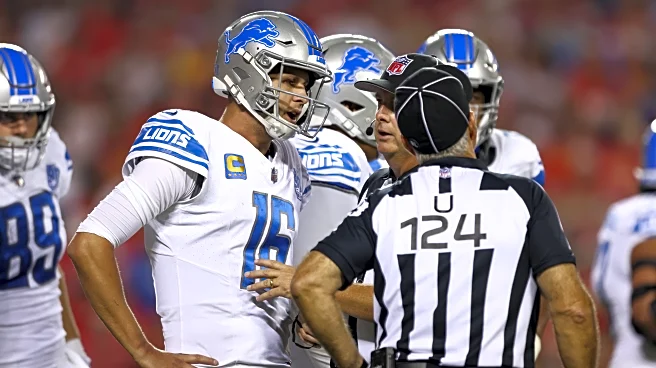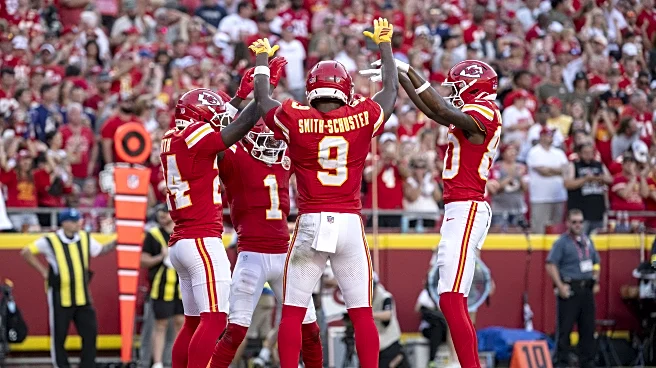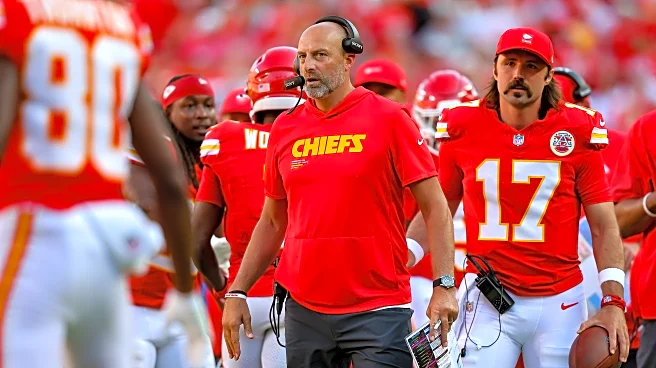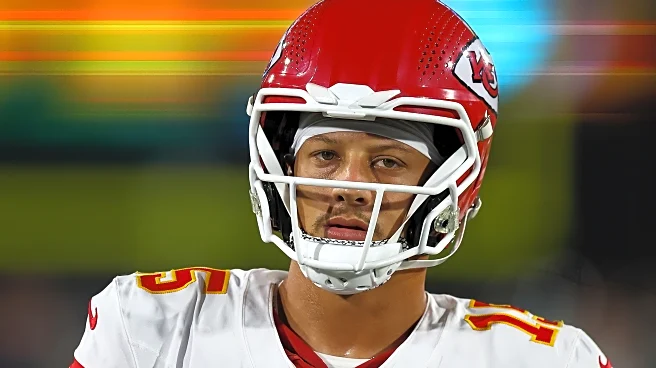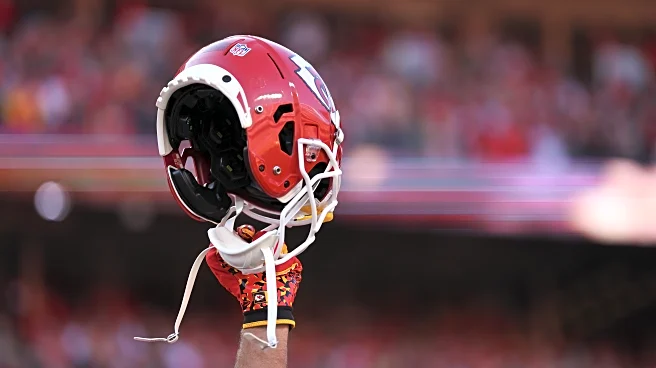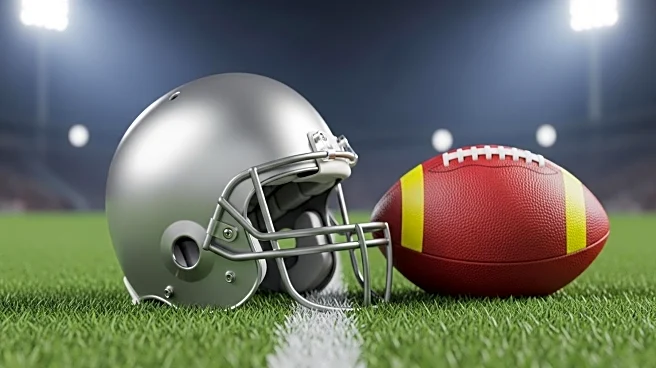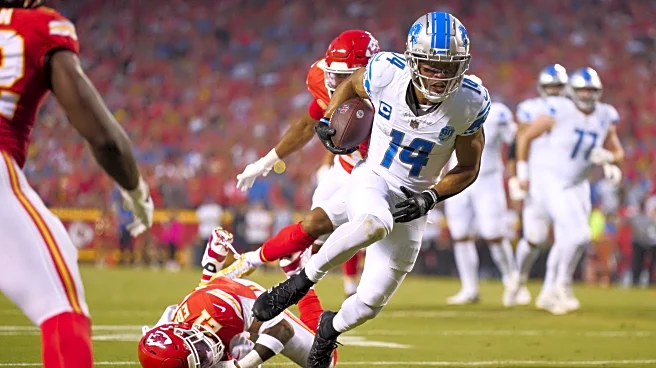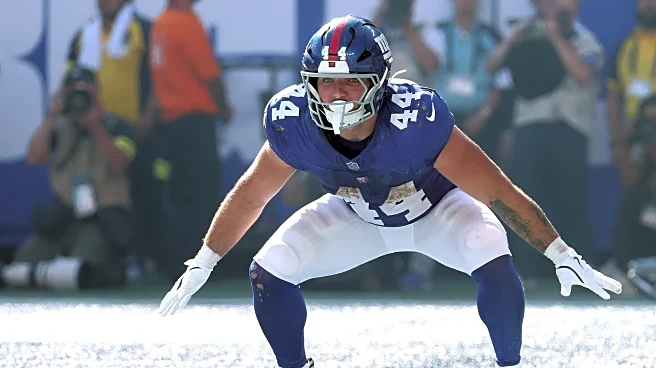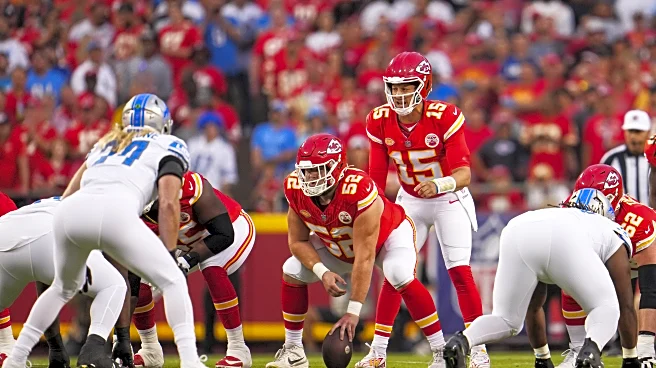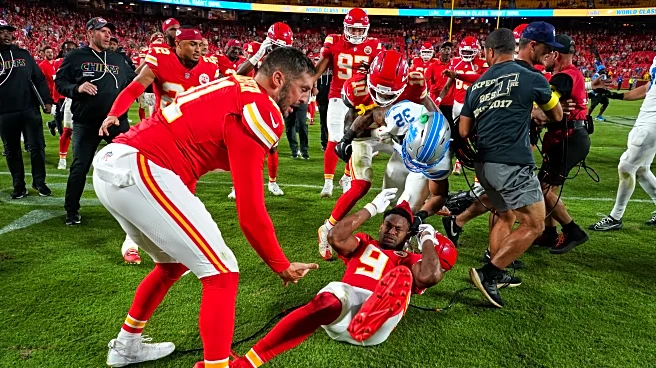On Sunday night, the Detroit Lions kicked off their primetime game with an impressive opening drive. A 15-play, 61-yard march down the field bled nearly 10 minutes off the clock, and appeared to end with a trick-play
touchdown. David Montgomery took a direct snap and threw a 1-yard touchdown to quarterback Jared Goff. Take a look:
Unfortunately for Detroit, after a lengthy officiating meeting, the Lions were called for an illegal motion on the play, taking the points off the board and forcing Detroit to settle for a field goal.
What rule did the Lions break? And was it the right call? Let’s break down the play, what the rulebook says, what the officiating crew said, and how Lions players reacted after the game.
Was what the NBC broadcast said about the play true?
The NBC broadcast was on top of the call and actually called that it was illegal before the refs threw the flag. Rules analyst—and former NFL official for 20 years—Terry McAulay explained here:
“He (Goff) takes a position behind the center. He’s got to step back and pause for a second and establish as a back before he goes in motion. He didn’t. He stayed in motion. This is illegal. This is an illegal formation.”
McAuley is basically right, but there’s a little more to it.
What does the rulebook say?
The NFL rulebook has a better explanation, and it lays it out quite clearly. It’s Rule 7, Section 4, Article 2, Item 3 (section bolded by me):
T-Formation Quarterback. It is legal for a T-Formation Quarterback to go in motion, whether he has placed his hands under center, on his knees, or on the body of the center. However, it is a false start if the action is quick and abrupt. If the player fails to come to a complete stop for at least one full second prior to the ball being snapped, it is illegal motion.
The rule is also listed under Rule 7, Section 4, Article 8:
It is also illegal motion if a T-Formation Quarterback goes in motion and fails to come to a complete stop for at least one full second prior to the snap.
Goff is still moving when the ball is snapped, so that “complete stop” never happens, and it’s illegal motion, as called.
The biggest question here is whether Goff established himself as a T-Formation quarterback or if he was considered just a back in motion who doesn’t have to stop before the snap. The rulebook definition of a T-Formation quarterback is “a player aligned one yard or less behind the snapper.” While you don’t see it on the replay above, the broadcast clearly shows Goff right behind center, even touching center Graham Glasgow before going into motion, although his hands never go under center.

However, this is not the way the Lions interpreted the rule. More on that in a bit.
What did the officials say after the game?
Referee Craig Wrolstad talked to the media after the play, and pretty much explained everything the way it was explained above. Here’s what he said:
“We had a quarterback go up to the line of scrimmage. He paused momentarily in the quarterback position, didn’t get under center, but he walked up and stopped like he was the quarterback. Then, he went in motion, and they threw the ball to him for a touchdown. If the quarterback assumes the quarterback position and then goes in motion, he has to then stop for a second before they snap the ball.”
One interesting aspect of this rule is that if Goff had come out in shotgun instead of going behind center, the play would’ve been legal. Wrolstad explains here:
“If he doesn’t assume a t-quarterback position, then he would not have had to stop (his motion). He would have had to stop originally in the shotgun formation for a second. Everybody would have had to be set for a second. But then if he goes in motion, he would not have to stop.”
What did the Lions have to say?
Lions coach Dan Campbell wouldn’t say if he agreed or disagreed with the call. He just explained what was told to him, and then said it didn’t change the outcome of the game.
“It doesn’t matter if I agree or disagree […] They said that he never stopped, he stayed in motion. He can’t stay in motion. That was that. That had no bearing on the game. We lost by 13 points,” Campbell said.
But here’s where things get semi-interesting. Campbell also said, “I know it came from New York,” suggesting the officials on the field got help from the league’s officiating hub to come to the decision. But here’s the problem: that isn’t a reviewable play. On-field officials are not permitted to get help on a play like that.
However, Wrolstad’s account of what happened is in contrast with what Campbell said.
“We did not have any assistance from Kansas City or New York,” Wrolstad said.
As for Goff, he admitted he had a different understanding of the rule when it comes to establishing yourself as a T-Formation quarterback.
“I gotta do a little—I guess we all do—a little research on what exactly went wrong,” Goff said. “Because my hands were not under center, and I was set to begin the play. As far as I was concerned, I thought that was the only thing I needed to do. They were saying that—I’ve never heard this—because of how close I was to the center that then declares me as a quarterback, and then I can’t go in motion. I was only under the impression that it was my hands under center (that declared me as a quarterback).”
Goff’s understanding is still slightly off. As a T-Formation quarterback, he is allowed to motion, but he must come to a complete stop for a full second before the snap is made.
